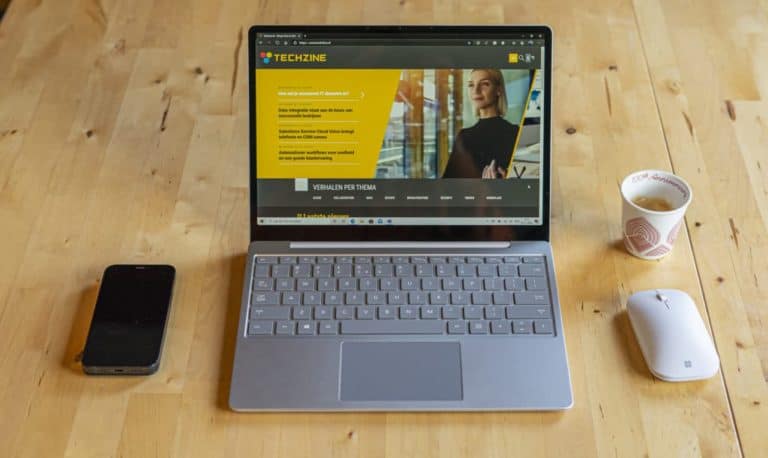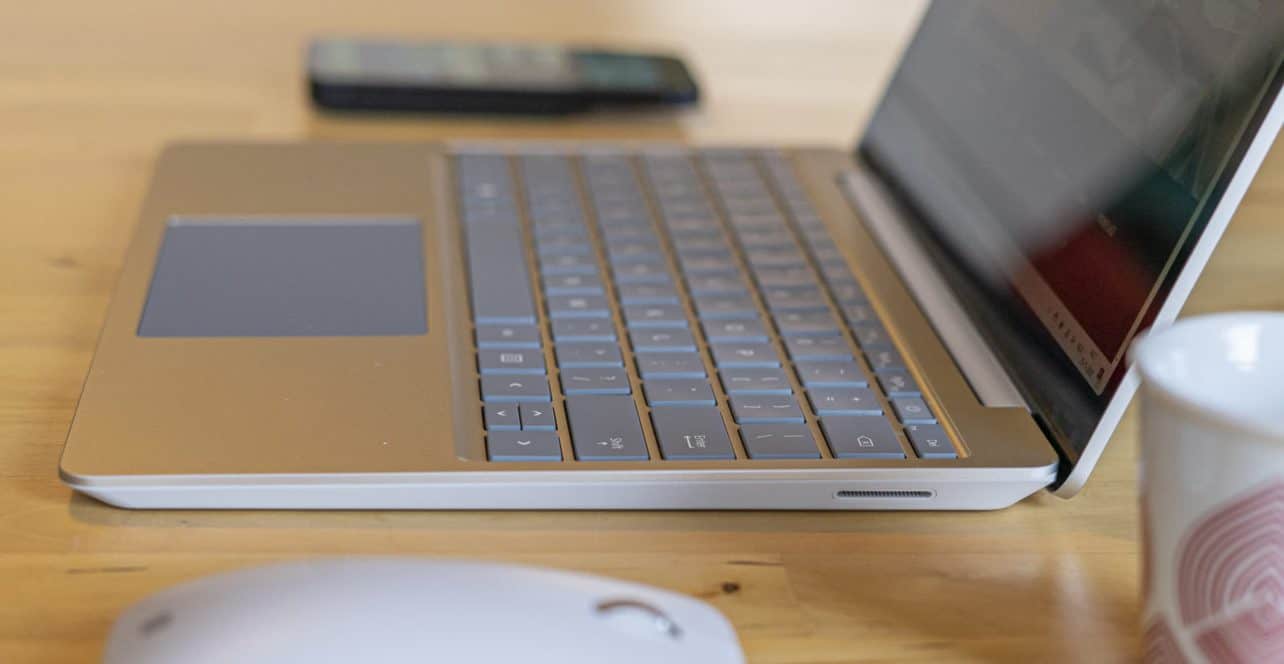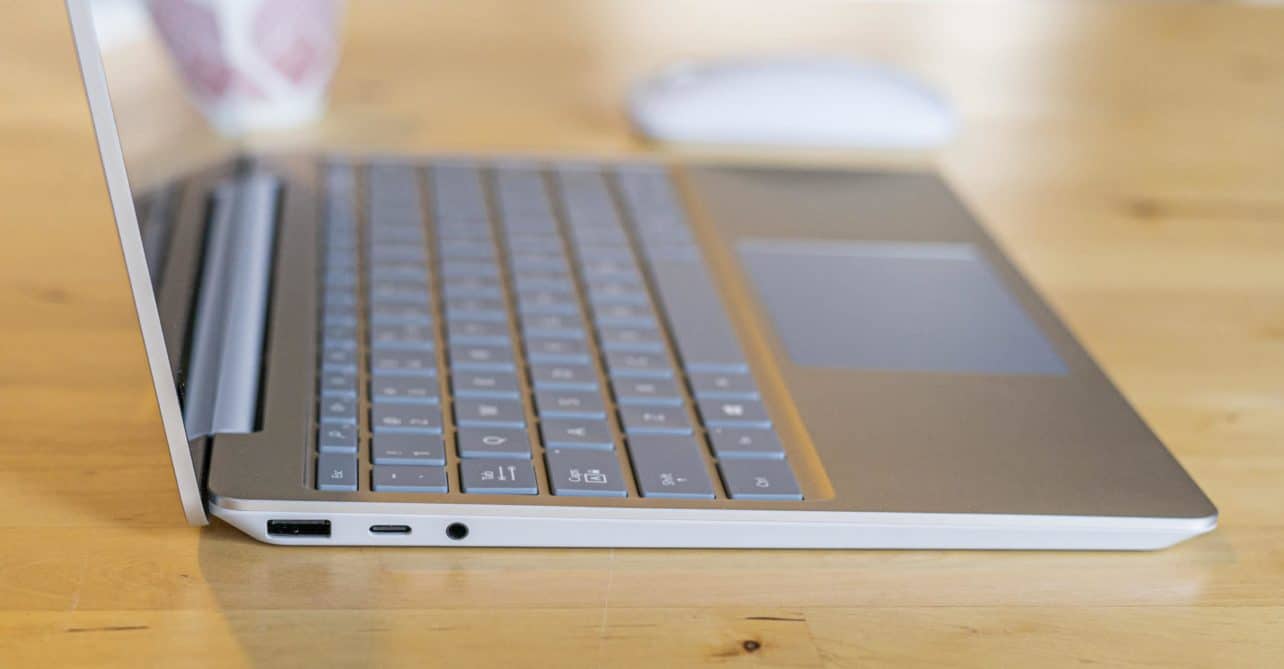This autumn, Microsoft released its first affordable laptop in the Surface line. The Surface Laptop Go does not have the high-end hardware of its bigger brothers but should offer an excellent user experience for little money. In this review, we will find out if this is possible.
Microsoft has released tablets in the Surface Go line before, with the Microsoft Surface Go 2 being the latest addition earlier this year. The Surface Laptop Go pours the portable, affordable and user-friendly Go idea in a clamshell design. Whereas the Surface Go is unique in its price range purely because of its tablet form factor and full Windows integration, the Surface Laptop Go will end up in a busy market full of affordable laptops. Microsoft hopes to enter this competition with a streamlined user experience and a relatively luxurious appearance.
Surface design
The Surface Laptop Go design is typical for a Surface product, making it stand out from its peers. Affordable laptops are generally made of plastic, have large bezels and look a bit messy. The Surface Laptop Go takes the opposite approach.
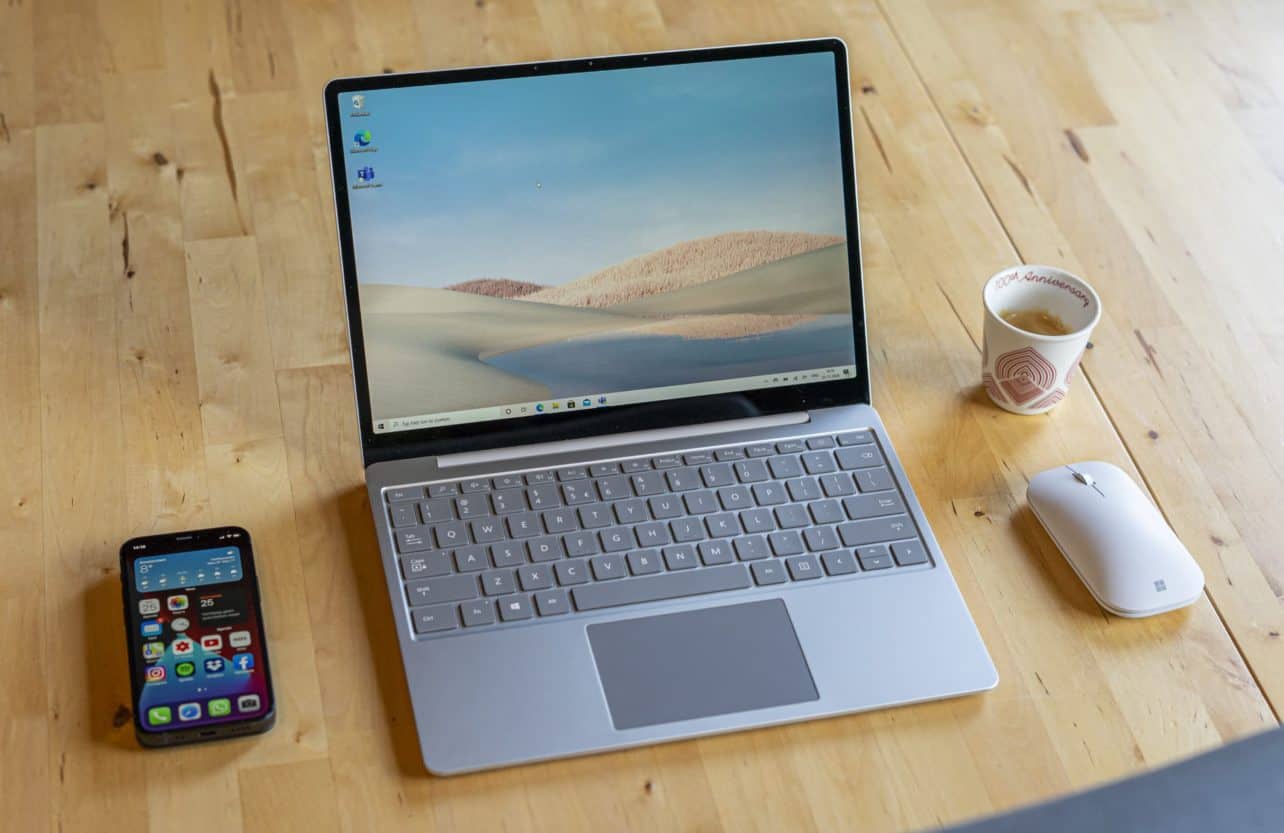
The display bezels of the Surface Laptop Go are particularly slim. Even more so than the Surface Laptop 3, which is extraordinary in this class. The design is sleek and well finished, as you would expect from a Surface product. We received this laptop in the Platinum colour, which only has a subtly glossy Microsoft logo on the otherwise sleek matte lid. Depending on your specific region, Ice Blue and Sandstone colours are available as well.
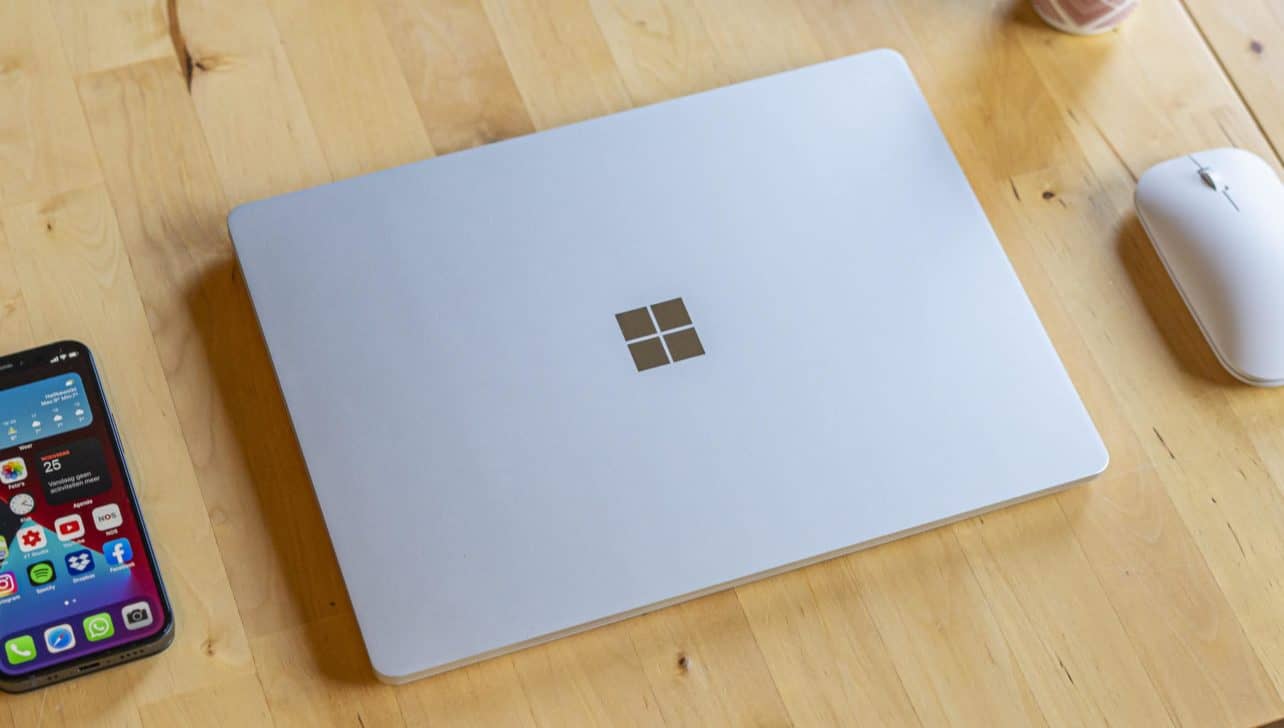
The laptop is largely made of metal; only the bottom is plastic. You don’t notice that much, though, and it even makes the laptop a bit lighter. Tipping the scale at just 1110 grams, it is the lightest Microsoft laptop so far and you can easily take it with you wherever you go.
Decent features
Functionally, the design of the Surface Laptop Go is fine, but not much more than that. On the right side of the laptop, you’ll only find the Surface Connect port, which you will primarily use for charging. On the left are a single USB-A and USB-C port, as well as the 3.5mm audio jack. The USB-C port does not support Thunderbolt, but can of course be used to connect the laptop to a display and/or dock. The presence of only these two USB ports means that if you want to use the Laptop Go in the office, a USB dock is a must-have.
The Windows Hello camera we know from most Surface products has disappeared and made way for a fingerprint scanner. It’s incorporated into the power button on the keyboard, allowing you to still use Windows Hello for easy unlocking and authentication.
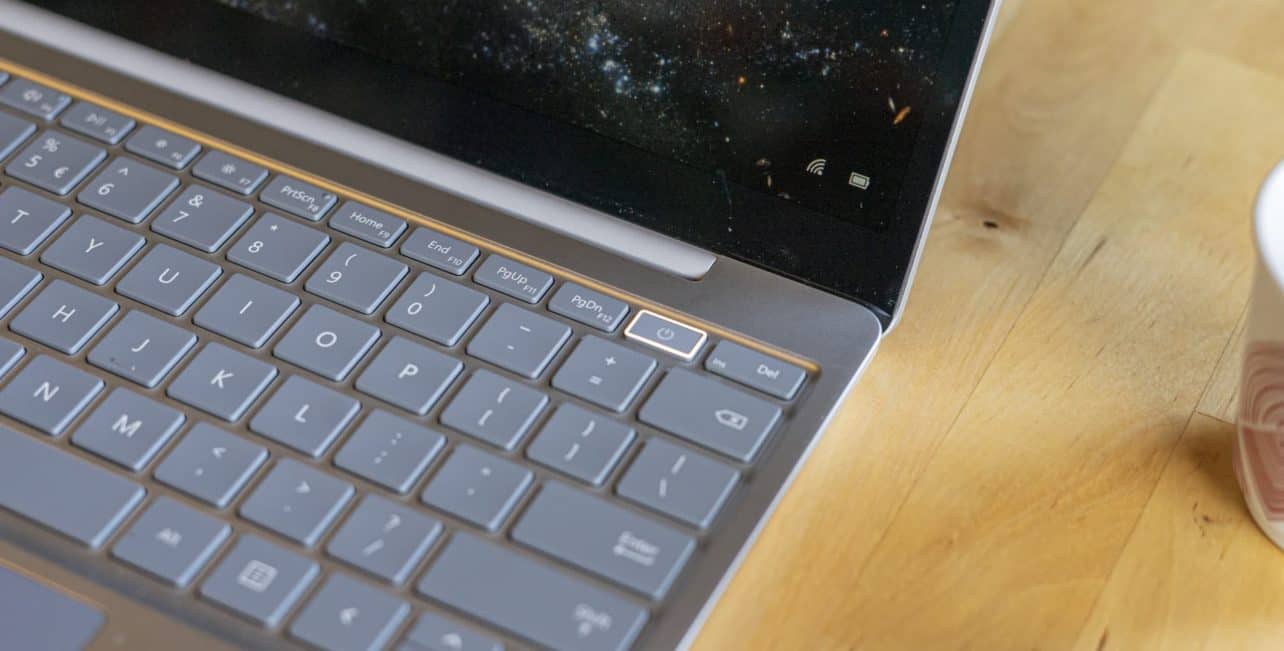
The keyboard itself is remarkably pleasant. Despite the small size of the laptop, we got used to typing on it after an hour and could easily write many pages of text on the Laptop Go. The keys feel nice, have quite a bit of key travel and provide enough feedback. The only drawback is that the keyboard is not backlit. The trackpad, just like the keyboard, is small but pleasant. It is sensitive, supports multitouch gestures and feels nice to the touch. Of course it is not as pleasant as the trackpads in larger laptops, but for the size it is certainly not that bad.
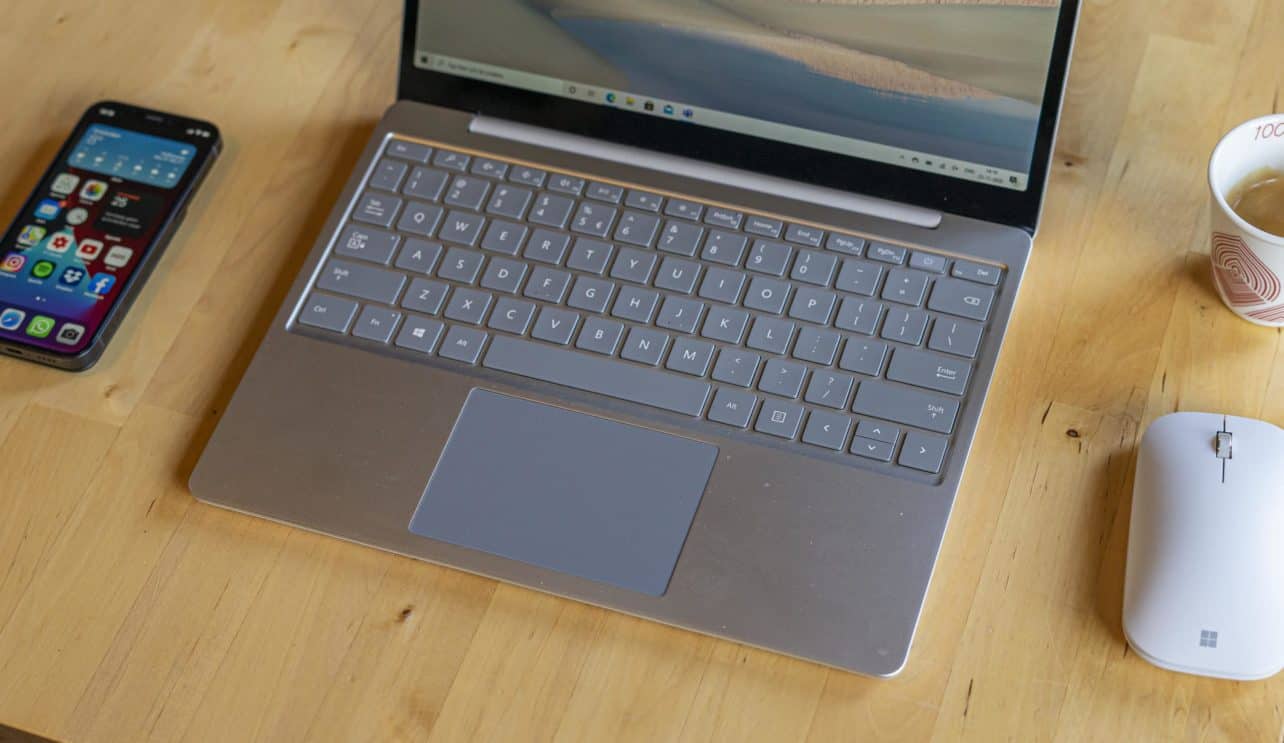
Standard with touchscreen
The laptop isn’t very large. The Surface Laptop Go has a 12.4-inch screen and is, therefore, smaller than many competitors. The touch-sensitive display is the same in all versions. This is also unique for an affordable laptop.
The display has a 3:2 aspect ratio, making it excel in basic productivity tasks. Which is good, because that’s probably what you’ll be using this laptop for. It’s less great for split-screen multitasking and graphical applications, but we don’t think that’s a problem for using this laptop. The picture quality does not disappoint either: the viewing angle is good, the brightness more than sufficient and the calibration is good. Unfortunately, the resolution falls short. Whereas most laptops nowadays have at least a full HD screen, the Surface Laptop Go only has 1536×1024 pixels. This results in a pixel density of 148 ppi, which isn’t that much.
Powerful for basic use
Microsoft markets the Surface Laptop Go with a low starting price: you can get your hand on the device for only 629 euros. This gets you the 10th generation Intel Core i5 processor that’s featured in all versions of the Surface Laptop Go. Aside from that, the basic model of the Surface Laptop Go is very sparse. It only has 4GB of RAM and 64GB of storage space. According to Microsoft, roughly half of this remains when Windows is installed. What’s more, this version is not available on the business market and is therefore only available with Windows 10 Home.
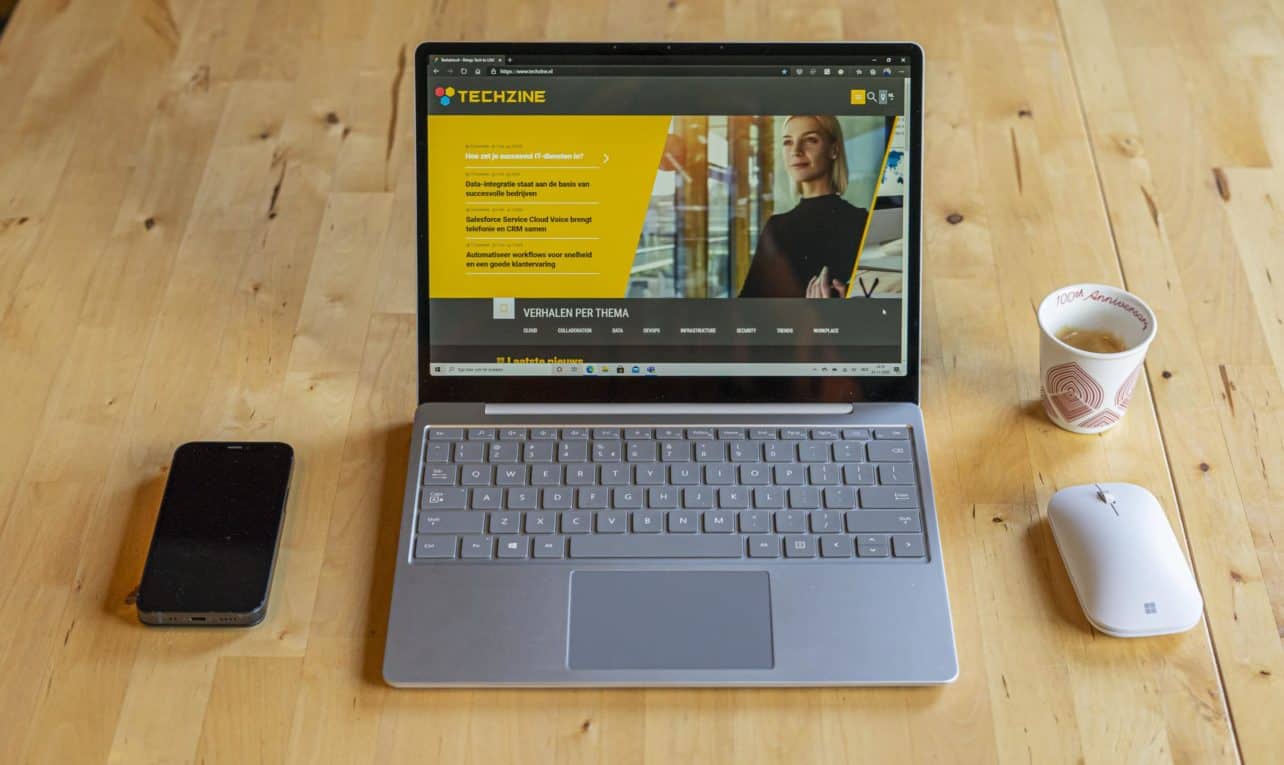
Business versions of the laptop start at 899 euro. This gets you the same Core i5 processor, 8GB RAM, 128GB storage and Windows 10 Pro. Still no amazing specs, but sufficient for light use. We reviewed the most expensive configuration of the Surface Laptop Go; equipped with 16GB RAM and a 256GB SSD. That one costs 1,349 euros, bringing the price dangerously close to that of more powerful and complete ultrabooks such as the new MacBook Air and Dell XPS 13. As far as we are concerned, the cheaper configurations are the better options for the Surface Laptop Go.
The performance in practice still shows that the Surface Laptop Go is mainly aimed at people who don’t demand much of their laptop. If you mainly send emails, use text processors and use software such as Slack or Teams, the Surface Laptop Go will do you right. Everything works smoothly and without any problems. If you’re working with large files or try to edit a few photos, for example, the Laptop Go’s – admittedly fairly quiet – fan ramps up, and things will slow down a bit.
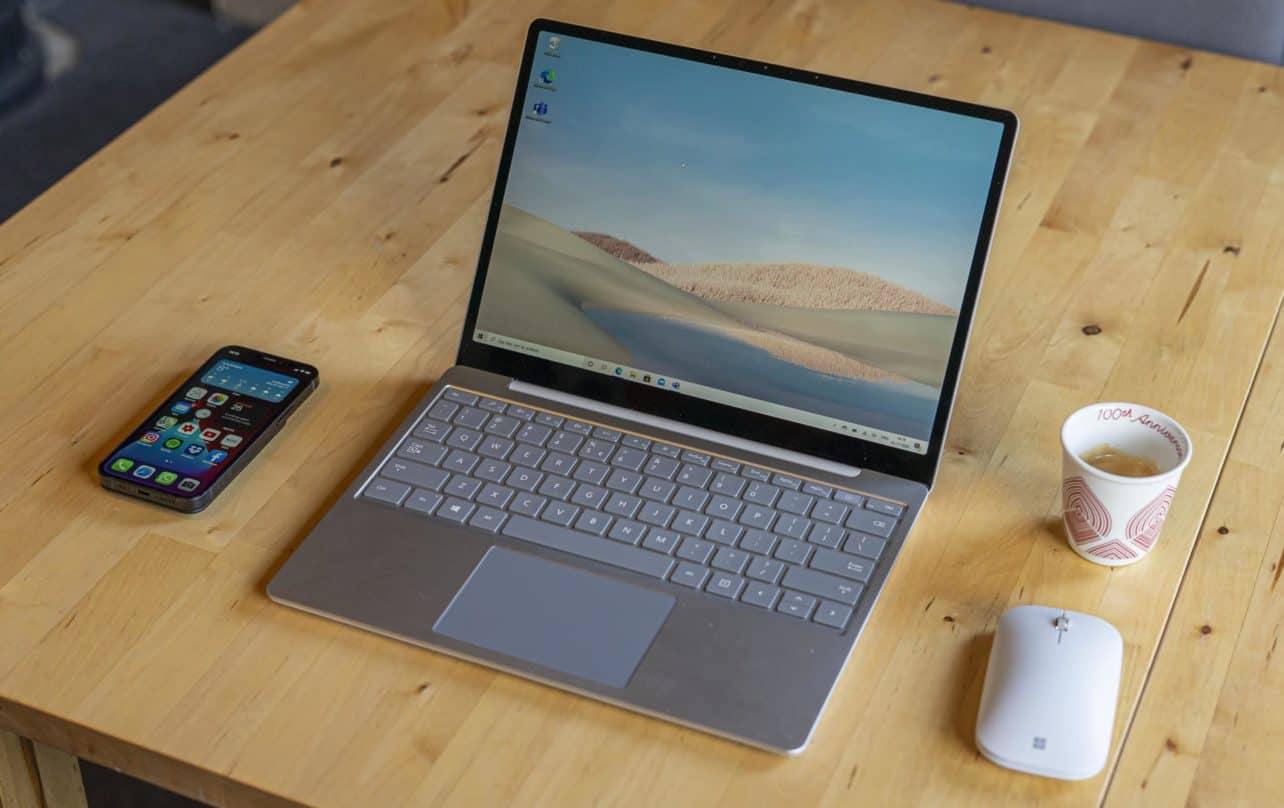
Running a heavy load also has repercussions on the battery life. Microsoft claims laptop can do 12 hours on a full charge. That may be a bit exaggerated, but if you don’t stress the laptop too much, it will get you through the day. With a heavier load, the battery drains fairly quickly. Thanks to the quick charge support, the laptop recharges fast: just under an hour and a half for a full charge.
Aimed at video conferencing
Working from home and video meetings are the norm nowadays because of the coronavirus, this is expected to continue for some time. Microsoft has taken this to its advantage by equipping the laptop with excellent hardware for video conferencing. The laptop has two far-field microphones that can still pick up your voice if you’re at some distance from the laptop. The 720p webcam is not amazing, but it will do the job.
The Microsoft Surface Laptop Go’s speakers sound a little hollow when you play music on them, and the higher tones don’t sound great either. Voices, on the other hand, sound very clear. The focus on video calling is obvious.
Conclusion
Whereas many affordable laptops aim to offer as much performance and as many features as possible for their price, the Microsoft Surface Laptop Go takes a different approach. The whole device is designed to provide the best possible user experience for those who spend a lot of time on the road and don’t demand much from their laptops.
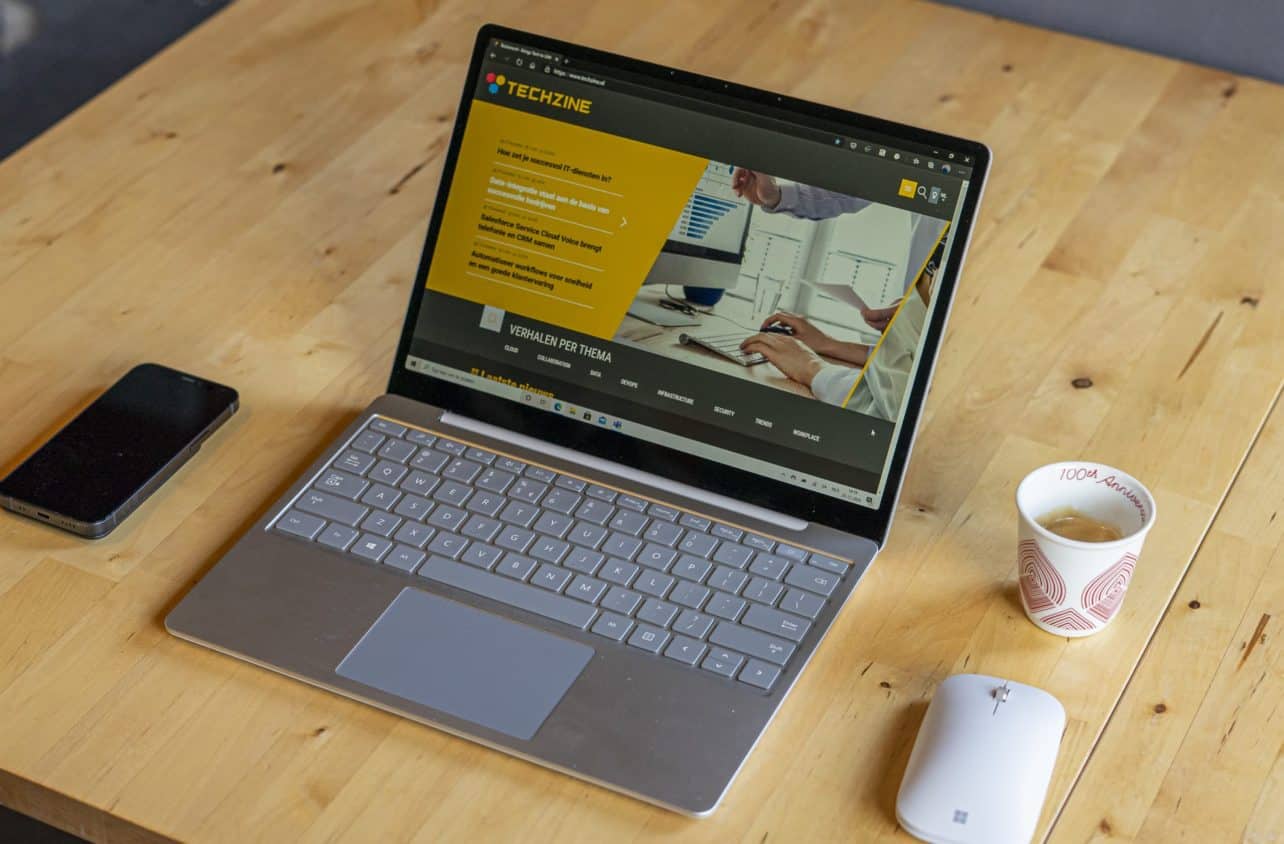
This means that you lose out in terms of functionality and memory. The Surface Laptop Go has a limited set of connections and the base model comes with rather little memory and storage space. These things won’t bother you very much when you work with smaller documents and are on the road a lot. Because of its extremely compact, sleek and well-finished design, nice keyboard, good video calling capabilities and excellent battery life in light use, the Surface Laptop Go is ideal for easy and mobile use. The fact that the laptop is equipped with a touch screen as standard is a nice bonus.
The only real disadvantage for the intended user of the Microsoft Surface Laptop Go is the rather low display resolution. Furthermore, it is good to ask yourself how much memory and storage space you need. If you require more than 8GB and 128GB, the price of this laptop gets pretty close to more advanced models that may end up being a better choice.
- Tight and luxurious design
- Light and portable
- Touchscreen
- Works well with light usage
- Limited connectivity
- Screen resolution
- Little memory and storage in base models
